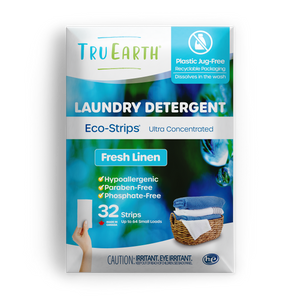Discovering bugs that eat clothes can be a frustrating experience, as they can cause significant damage to our cherished garments. This comprehensive guide will delve into the world of clothing-eating bugs, identify the most common culprits, explore the reasons behind their destructive behavior, and provide effective strategies to eliminate them.
By understanding these pests and implementing preventive measures, you can protect your clothing and maintain a pest-free environment.

Identifying Common Clothing-Eating Bugs
To effectively combat clothing-eating bugs, it's crucial to be able to identify the specific pests responsible for the damage. One common culprit is the clothes moth, known for its ability to consume natural fibers like wool and silk.
Carpet beetles, on the other hand, can target a wider range of materials, including carpets, upholstery, and clothing. Additionally, silverfish, attracted to starches and sugars, may also cause damage to fabrics.
Understanding their appearance, behavior, and preferred habitats will help you recognize and address these pests effectively.
The Reasons Behind Clothing Damage
Understanding the motivations behind clothing-eating bugs can help you effectively protect your garments from infestations and damage. These pests are drawn to specific factors that make our clothes attractive to them
For instance, clothes moths are particularly fond of natural fibers like wool and silk, as they provide a rich source of nutrition. These fibers contain keratin, a protein that serves as a food source for clothes moth larvae. Additionally, bugs are also attracted to sweat, skin cells, and stains on clothing, as these organic residues serve as a source of sustenance.
Prevention: Protecting Your Clothes from Bugs
Prevention is key when it comes to dealing with clothing-eating bugs. To protect your clothes, it's important to adopt preventive measures. To minimize the risk of infestation and protect your clothes, addressing these factors that attract clothing-eating bugs is important.
Regular cleaning is key in preventing infestations, as it removes sweat, skin cells, and other residues that can attract bugs. It's advisable to launder your clothes frequently, especially after wearing them or storing them for an extended period.
Pay close attention to stains, as they can be particularly enticing to pests. Prompt treatment of stains with appropriate stain removers or gentle detergents can help eliminate any residues that might attract bugs.
Proper storage practices also play a vital role in deterring clothing-eating bugs. When not in use, ensure that your garments are clean and completely dry before storing them. Bugs are less likely to be attracted to clean clothes. Opt for storage solutions that provide a protective barrier against pests, such as sealed containers or garment bags.
Using acid-free tissue paper between layers of folded clothing can help maintain their shape and discourage bug activity. Furthermore, keeping your storage areas clean, well-ventilated, and free from clutter reduces the chances of bugs finding a suitable environment to thrive.
Regular cleaning, proper storage techniques, and timely treatment of stains all create an environment that is less appealing to these pests. Taking these proactive steps will help ensure the longevity and integrity of your garments, keeping them free from the destructive impact of clothing-eating bugs.

Eradication Methods for Clothing-Eating Bugs
When faced with a clothing bug infestation, it's crucial to take immediate action to eliminate these pests and prevent further damage. Here are some effective methods for eradicating clothing-eating bugs:
- Thorough Cleaning and Washing: Start by gathering all infested items and giving them a thorough cleaning. For machine-washable fabrics, washing them in hot water (if the fabric allows) can help kill bugs and their eggs. Use a mild detergent from Tru Earth formulated for the fabric type to avoid damage. Pay extra attention to seams, folds, and hidden areas where bugs may lay eggs. After washing, ensure the clothes are completely dry before storing them.
- Freezing Delicate Fabrics: Delicate fabrics that cannot withstand hot water can be treated by freezing. Place the infested items in sealed plastic bags and freeze them for a few days. The extreme cold temperatures will kill both bugs and their eggs. Once frozen, allow the items to thaw at room temperature and then clean them as recommended for the specific fabric.
- Vacuuming Infested Areas: Clothing-eating bugs can infest more than just your garments. They may also hide in carpets, upholstery, and closets. Use a vacuum cleaner with a nozzle attachment to thoroughly vacuum these areas, paying close attention to seams, corners, and crevices. Empty the vacuum bag or canister outside to prevent any potential reinfestation.
- Natural Repellents: Consider using natural repellents to deter clothing-eating bugs from returning. Lavender and cedar are known to have repellent properties and can be used in various forms. Place sachets filled with dried lavender or cedar chips in your closets and drawers to create an inhospitable environment for bugs. Alternatively, you can dilute essential oils with water and spray the solution around infested areas.
- Professional Extermination: If the infestation persists or is widespread, it may be necessary to seek professional extermination services. Pest control professionals have the expertise and tools to eliminate clothing-eating bugs effectively. They can assess the extent of the infestation, provide targeted treatments, and offer advice on preventing future occurrences.
The bottom line is that prevention is key to avoiding clothing bug infestations. Regularly inspect your clothes and storage areas, practicing good hygiene and cleanliness. Following these eradication methods and adopting preventive measures, you can effectively combat clothing-eating bugs and protect your garments from further damage.
Seeking Professional Assistance If Needed
In severe or persistent infestations, seeking professional assistance may be necessary. Pest control professionals have the expertise and specialized treatments to eradicate clothing-eating bugs effectively. They can conduct thorough inspections, provide targeted treatments, and offer advice on preventive measures to avoid future infestations.
When choosing a professional, ensure they are experienced in dealing with clothing-eating pests and use eco-friendly and safe practices.

Keep Your Clothes and Your Homes Safe!
Dealing with bugs that eat clothes can be a frustrating and disheartening experience. However, armed with knowledge and preventive measures, you can protect your clothing and eliminate these pests from your living space.
By identifying the specific bugs, understanding their motivations, and implementing preventive techniques, you can minimize the risk of infestation. In case of an infestation, prompt action and the use of appropriate eradication methods will help restore the integrity of your clothing. Remember, early detection, regular cleaning, and proper storage practices are essential for maintaining a bug-free wardrobe


